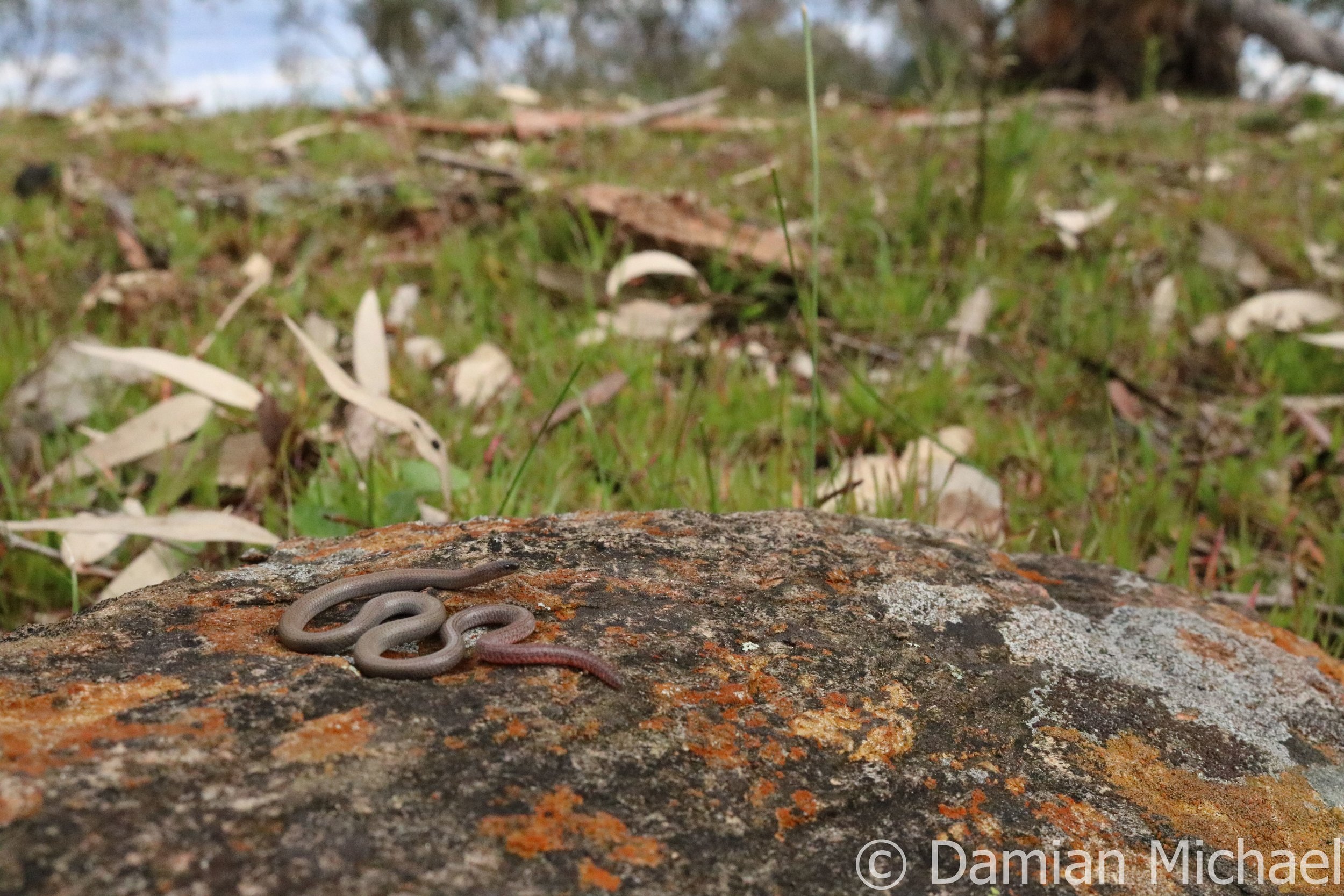Damian Michael
Conducting research on reptile communities in rural landscapes is a challenge. This is because many species are rare, occur patchily in the landscape and are active at different times of the day. The ability to detect different species is also influenced by temperature and humidity. Livestock can also restrict the use of traditional survey methods such as pitfall traps, funnels and fences. Instead, we rely on using artificial substrates and actively searching for reptiles in leaf litter, grass tussocks or beneath bark, logs and rocks – a difficult task as most species don’t want to be found! However, after nearly two decades of recording and observing lizards on farms, we have a few important insights to share.
#1. In any given region, two or three species account for almost 80% of all reptile observations. Is this a reflection of historical widespread declines in reptile populations we wonder? The most common lizard species we encounter are Boulenger’s Skink Morethia boulengeri and the Ragged Snake-eyed Skink Cryptoblepharus pannosus. Both species being more abundant in areas with lots of fallen timber and dead standing trees. Some species are naturally rare across their geographical range, but locally common where suitable habitat exists. We often discover small aggregations of geckos or legless lizards occupying rocky knolls no larger than 1 ha. Common species play important ecological roles and are prey for other reptiles, carnivorous marsupials and a host of bird species. The lesson here is to keep common lizards common by protecting their habitats, no matter how small the area is.
Boulenger’s Skink Morethia boulengeri
“If a management objective is to maintain maximum reptile diversity, rocky outcrops, paddocks of bushrock and old growth remnants need more formal protection.”
#2. Reptile diversity is highest in areas that support rocky outcrops, old growth vegetation and intact ground cover. Places that have never been cleared, cropped or fertilised often support more rare and threatened species, particularly reptiles that use surface rocks, soil cracks and invertebrate tunnels such as the Nationally Vulnerable Pink-tailed Worm-lizard Aprasia parapulchella. Large rocky outcrops can support three times more reptile species than a patch of remnant vegetation of similar size, and old vegetation often supports more species than regrowth or revegetated areas. That’s not to say that natural regrowth or revegetation projects aren’t important, but if a management objective is to maintain maximum reptile diversity, rocky outcrops, paddocks of bushrock and old growth remnants need more formal protection.
#3. Revegetation projects support many different reptile species. However, most reptiles we found using 10 – 30 year old tree plantings tend to be widespread generalists, species that live in open grasslands, or wide ranging species capable of moving through farming landscapes (e.g. blue-tongue lizards and brown snakes). We have found more reptile species using revegetated areas if they are excluded from livestock grazing, support native grasses, provide both sunny and shady areas, and include dead trees, fallen timber and bushrock. Designing an ecological tree planting for reptiles may look very different to a planting designed to encourage small woodland birds back into the landscape.
#4. Grazing landscapes can support a wide variety of reptile species. Several studies have found that the number and composition of reptile species in grazing landscapes compared to ungrazed areas is comparatively similar. Although grazing management is important for rehabilitating native vegetation, in grassy woodland ecosystems some livestock grazing pressure has little influence on reptile communities. Instead, the presence of micro-habitats such as native grasslands, fallen timber and bushrock can override effects of grazing pressure. Sadly, new technology is now being used to pulverise and crush bushrocks in the paddock. This activity is extremely concerning as it may cause a new wave of localised lizard extinctions on farms. We should be actively seeking new ways to maintain and protect small rocky outcrops on farms, not developing technologies to turn them into rubble.
Rocky outcrops like this provide critical habitat for reptiles.


